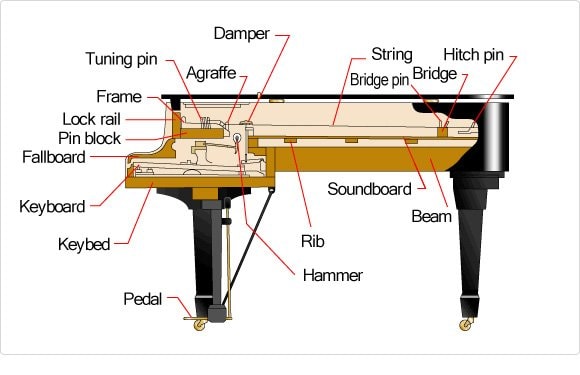The Sound-Producing Mechanism
The Sound Produced When Strings Are Struck Resonates Throughout the Entire Instrument
When a key is pressed, a hammer inside the piano strikes the strings from below. However, this only produces a soft sound.
One end of the strings is supported on bridges, which are attached to the soundboard. The vibrations of the strings are transmitted to the soundboard through the bridges, and a loud sound resonates as a result of the soundboard vibrating the air. The entire piano, notably the soundboard, vibrates to produce sound.
Schematic Rendering of a Grand Piano

Musical Instrument Guide : Piano Contents
Origins
Structure
How to Play
How the Instrument is Made
Choosing an Instrument
Care and Maintenance
Trivia
- The White Keys and Black Keys Were Reversed on Pianos in Mozart's Day
- Did Mozart's Piano Have a Pedal-Board?
- Piano with Automatic Accompaniment System in Beethoven's Day
- The Pianos Beloved by the Great Master, Sviatoslav Richter
- The Optimal Material for Piano Frames Is Also Ideal for Motorcycle Engines
- The Piano Soundboard Is a Board that Also Stops Vibrations
- Why Can't There Be More Than 88 Keys on a Piano?
- Why a Grand Piano Keyboard Feels Heavier Than an Upright Keyboard?
